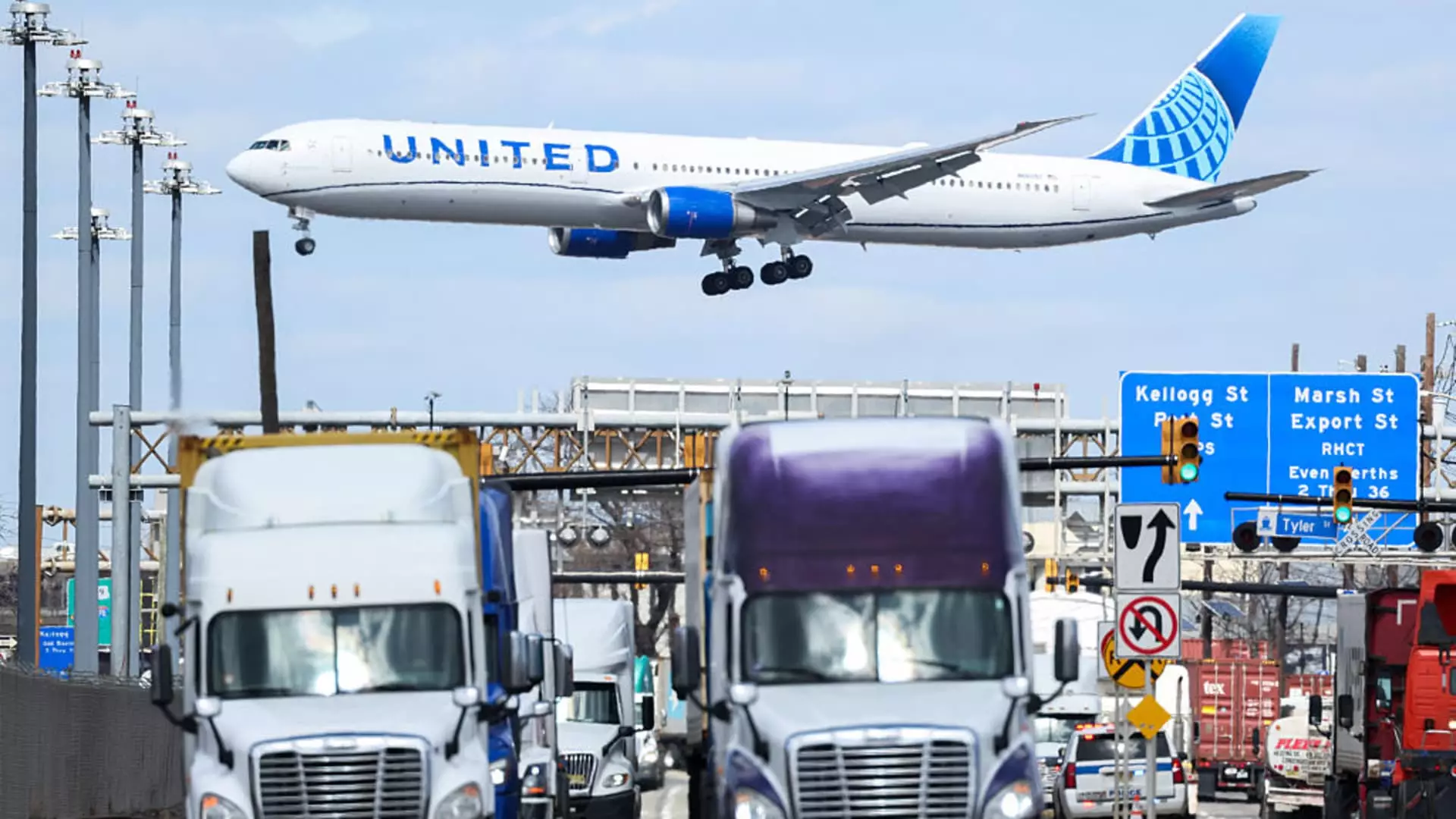United Airlines has taken a bold stand in an increasingly murky economic landscape by maintaining its full-year profit forecast while simultaneously acknowledging the realities of a potential recession. While their decision to provide alternate earnings guidance is strategically sound in theory, it reveals a distressing truth: the future is complicated and nearly impossible to predict. The statement, “impossible to predict,” speaks volumes about the volatility of the current market, leaving one to wonder if this dual approach is more of a defensive strategy than a confident boast.
In an era where economic stability feels ever fleeting, United Airlines finds itself at a crossroads. They anticipate adjusted earnings per share to be around $11.50 to $13.50 but provide a sobering alternative: if the U.S. slips into recession, earnings could plummet to between $7 and $9. This isn’t merely concern; it’s a potential tailspin, showcasing the precarious position the airline occupies in a world where the economic pulse lies at the mercy of unpredictable forces. Such hedging is indicative of both the wisdom and caution that must govern corporate strategies in the face of financial uncertainty.
Service Adjustments Amid Demand Fluctuations
In an equally revealing move, United plans to trim domestic flight capacity by about 4% due to disappointing domestic travel demand. This indicates a troubling downward trend in consumer confidence for domestic travel, which could signal broader economic issues. Strikingly, while domestic travel stagnates, international bookings—especially for premium services—remain robust. This duality presents an intriguing tension: are we witnessing a bifurcation in consumer sentiment, where travelers opt for luxury while simultaneously cutting back on more mundane journeys?
Scott Kirby, United’s CEO, insists that the company’s multi-year strategic plan has fortified them against these rapidly changing demand environments. However, one must question whether this self-assured stance is genuinely reflective of stability or simply a façade in the face of challenge. As domestic travelers apparently shy away, can an airline thrive predominantly on higher-end international trip revenues? The success of this approach will depend on an increasingly discerning customer base willing to adjust their spending habits amidst economic pressures.
Financial Performance and Market Trends
United Airlines revealed a $387 million profit in the first quarter, a welcome turnaround from last year’s loss of $124 million, significantly surpassing analysts’ expectations. Nevertheless, buried within these numbers is a critical revelation: while adjusted earnings outshone predictions, unit revenue for domestic flights dropped by nearly 4%. This should raise red flags. If domestic revenues are faltering, how sustainable is United’s current positive outlook?
This discrepancy between profitability and revenue sources prompts a deeper examination of United’s market positioning. If demand for premium-cabin bookings is up by an impressive 17% year over year, what implications does this have for the future of budget-conscious air travel? It seems that luxury is thriving while the mass market struggles. Companies like United Airlines must navigate these complexities, mindful of the ever-growing divide in what travelers are willing to spend.
Peer Positioning and Market Sentiment
The challenge United Airlines faces is not unique; rival Delta Air Lines has similarly signaled a slowdown in growth plans. When both airlines exhibit signs of caution in a recovering market, the implications can be far-reaching. Consumers have become increasingly wary, and behavior reflects both a desire for travel and an underlying fear of financial instability. With uncertainty rippling through the fabric of the market, airlines’ robust performance in premium segments may not be enough to offset potential declines in broader revenue streams.
In contrast to the glimmer of profitability, external factors like trade wars and government layoffs complicate the narrative. Such elements warp the economic landscape and influence consumer spending, posing questions about whether elite travel will continue to flourish amid widespread fear over recessionary pressures. If economic policy and market conditions do not stabilize, premium offerings may soon find themselves vulnerable to the same downturn affecting standard travel.
United Airlines’ current phase serves as both a beacon of profitability and a warning sign of looming economic uncertainty. While the airline industry may present pockets of success, the underlying challenges it faces reinforce the notion that even the strongest companies must remain vigilant in a world increasingly shackled by unpredictable economic dynamics.

